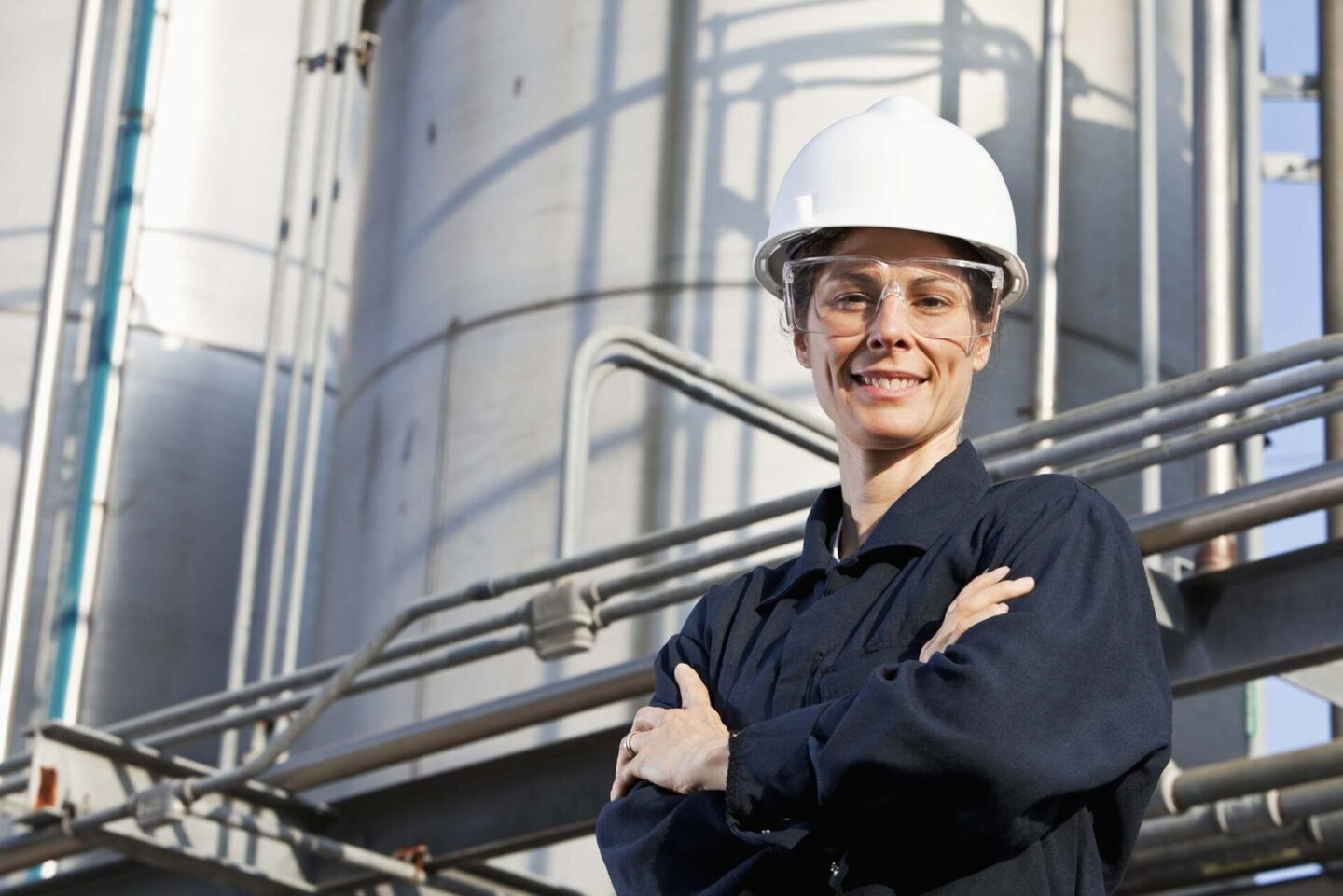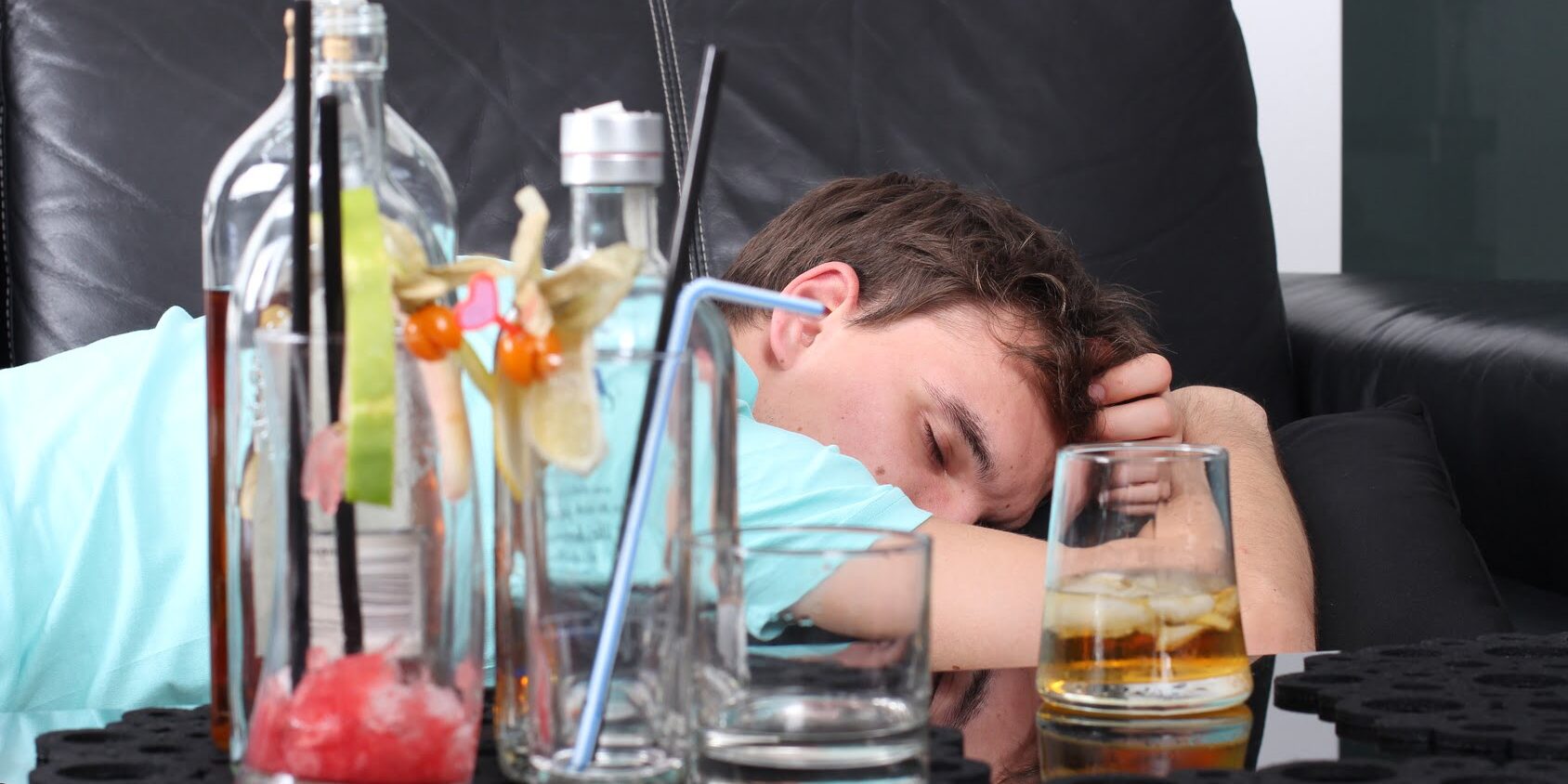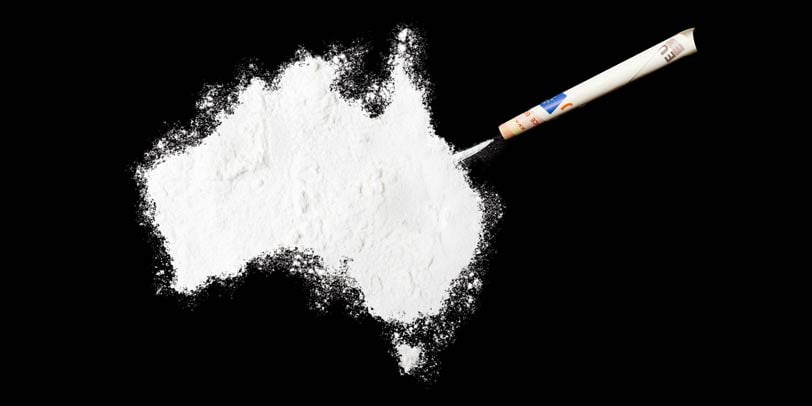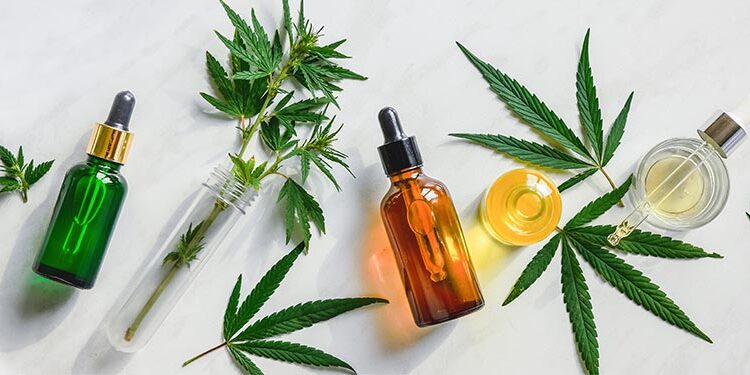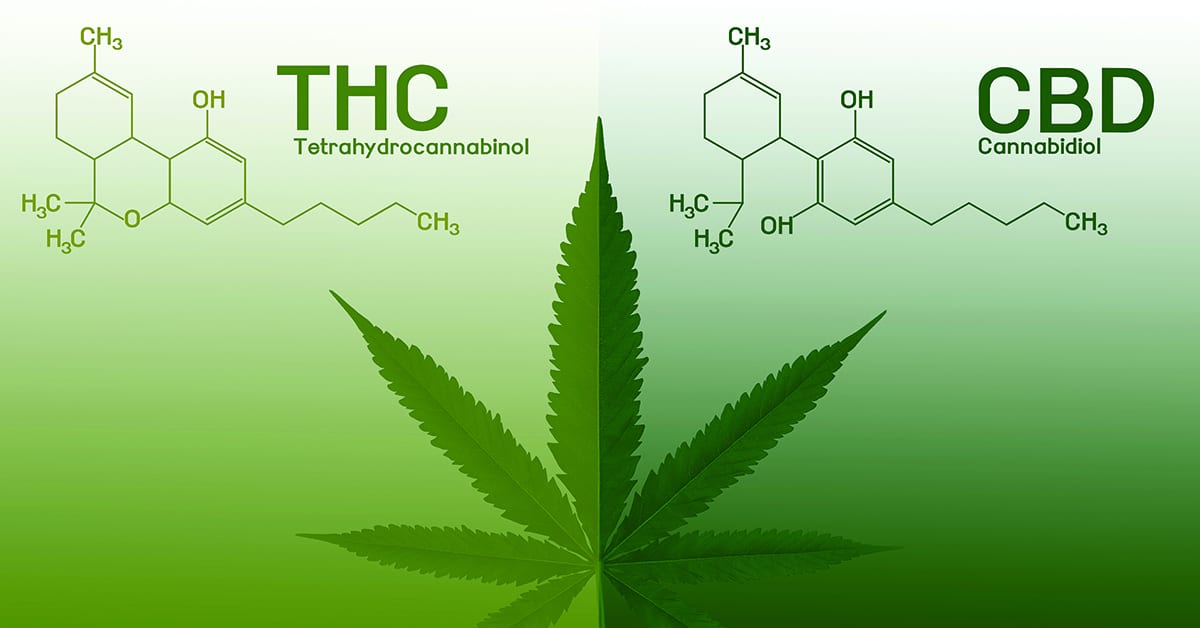Discover the ins and outs of pre-employment drug and alcohol testing, including methods and employer obligations.
Read more
When hiring new employees, employers are responsible for ensuring their workplace is drug and alcohol-free. For this reason, many companies make pre-employment drug and alcohol testing in Australia a requirement for employment or contracted service.
In this blog post, we’ll cover everything you need to know about pre-employment drug and alcohol testing — from what they are for and the different types of methods available to the potential steps an employer must take if they suspect a job applicant is misusing substances. Read on to learn more.
What is a pre-employment drug test and why do employers use them?
Employers use pre-employment medical drug tests to identify potential employees who may be someone with substance use disorder or have been recently.
They involve analysing a sample of a person’s urine, saliva, or hair for the presence of illicit substances or drugs that could impact an employee’s job performance or safety.
Pre-screening has several benefits, as it helps employers select reliable workers who value their health and safety and the well-being of their co-workers and customers.
How common are pre-employment drug tests and what drugs are they looking for?
Pre-employment drug testing is becoming increasingly common across Australia, with employers wanting to establish a safe and productive work environment.
Drug screening typically analyse substances like alcohol, cannabis, amphetamines, methamphetamines, cocaine, and opiates.
Employers need to ensure the health and safety of their employees, which is why pre-employment drug testing has become such a focus for many businesses. This helps ensure the workplace remains compliant and productive.
What methods are available for a pre-employment drug test in Australia?
There are four primary methods for conducting pre-screening tests:
- Urine drug test — Used to identify any potential drug use or intoxication in candidates that could hinder their job performance and/or the safety of workplace personnel.
- Oral fluid drug test (Saliva test) — Another feasible alternative because it is less intrusive than other techniques while still providing reliable drug analysis.
- Hair follicle drug test — They provide a longer timeline of drug use on the part of an individual, which can be important when considering jobs that require frequent monitoring of such behaviours.
- Alcohol breath test — Breathalyser testing provides quick and accurate results for assessing alcohol presence without the need for invasive procedures.
These drug testing methods offer employers insight into the character and tendencies of prospective employees and an added layer of security. Failing a pre-employment test may result in the withdrawal of a job offer, as it indicates potential safety risks or non-compliance with workplace policies.
Protect your workplace with pre-employment drug testing from Safework Health
At Safework Health, we offer experienced and accredited solutions for all your workplace drug and alcohol testing needs. We are accredited by the National Association of Testing Authorities (NATA) with locations in Perth, Brisbane, Sydney, Melbourne, Port Hedland, Darwin, and Adelaide.
Our innovative holistic approach provides comprehensive solutions, including testing and results analysis, policy development, educational workshops, certified training programs and on-site and/or in-house drug screening. We help our clients gain a more efficient and safer workplace for everyone.
Contact us today to learn how we can help you with your pre-screening needs.
Meet Sean Peters, a Quality Manager based in Safework Health’s Melbourne office. Sean brings a wealth of experience in occupational health.
Read more
Sean Peters recently joined Safework Health as Quality Manager based in our Melbourne office. Sean brings three decades of experience in the analytical, health and clinical laboratories management industries, specifically in Risk Management/Assessment, Quality Audits & Assurance, Research, Total Quality Management Systems, and ISO standards.
Here, Sean shares his career journey and offers advice to aspiring Quality Managers.
Tell us a bit about yourself
I commenced my career undertaking research and development in the field of gas and water purification in the power industry, supported by testing conducted in the analytical laboratory. This allowed for exposure to ISO standards for quality management systems and technical competence.
After nearly a decade in the research field, I joined the national accreditation body in South Africa, where I gained knowledge in the application of ISO standards to chemical, veterinary, forensic and human pathology testing, as well as international regulations for pre-clinical studies and the conduct of clinical trials involving human participants.
After a period working at the Australian national accreditation body, I ventured back into private industry in the capacity of Quality and Risk Manager at large private pathology companies.
What do you do in your role?
In a nutshell, the role ensures regulatory compliance with international accreditation and industry best-practice standards for the testing conducted in our facilities and laboratories, working in close conjunction with senior management, clinical, scientific personnel and collection personnel.
What do you like most about your job?
The function of my role varies daily and includes representing the company at external audits, internal audits on our workflow processes and testing procedures, continually reviewing processes for improvement opportunities, staying abreast of changes in accreditation and industry standards and opportunities for professional development.
Most importantly, I enjoy the people I get to interact with; some are starting out in their careers, while many others are recognised as industry leaders in their fields or speciality.
What attracted you to the workplace health and laboratory industries?
The importance of the requirement for testing to support industry safety standards and workplace safety, as well as the ever-changing landscape as new classes of illegal substances emerge.
What are your interests and hobbies outside of work?
My interests are varied, but could briefly be summarised as sunshine and outdoors, the ocean or countryside, dogs, walking, cycling, reading, music, and watching documentaries with a special interest in current world affairs and history.
What advice do you have for anyone wanting to become a Quality Manager?
Spend some time on the bench as a scientist or analyst, and never miss an opportunity to expand your skills and knowledge prior to moving into a quality management role. A Quality Manager requires strong interpersonal skills, analytical and problem-solving ability, persistence and creativity, the ability to influence others, a strategic approach to work and a strong ability to facilitate change.
Discover more
Learn more about our Team and our NATA Accredited Laboratories and Accredited Collection and Drug Testing services.
Ensuring a safe, secure, and productive work environment goes beyond simply having a policy and procedure prohibiting substance misuse.
Read more
Ensuring a safe, secure, and productive work environment goes beyond simply having a policy and procedure prohibiting substance misuse — it requires accurate, reliable, and timely measures to detect potential violations of your company’s policies. This is where drug and alcohol testing in the workplace comes in.
While regulations vary from state to state, this guide will provide comprehensive steps on what you can do to implement drug and alcohol testing procedures that are efficient, cost-effective, and compliant with any existing labour laws.
What is drug and alcohol testing in the workplace and why do employers conduct it?
Drug and alcohol testing is becoming increasingly commonplace in workplaces across Australia. This process involves examining various biological specimens of a human being to identify the potential presence of alcohol or drugs within an individual’s system. The specimens used in this testing can include urine, oral fluid (saliva), breath, hair follicle and blood.
Generally, drug test results help protect everyone involved, making it an essential part of any company’s health-related policies. For instance, it can provide insight into employee health issues, identify medical fitness risks, differentiate potential candidates, maintain a safe and productive working environment, and meet government regulations.
Additionally, drug and alcohol tests are often necessary for jobs in highly regulated industries where drugs or alcohol could potentially cause a threat to public safety.
When is workplace drug and alcohol testing needed?
Workplace drug and alcohol testing is typically needed in several scenarios, primarily to ensure safety and productivity.
It is commonly implemented in the following instances:
- Pre-employment drug and alcohol testing — Conducted before an individual’s start date and aims to evaluate the employee’s suitability for the role.
- Blanket screening — Allows managers to test all employees during any given event, while ‘For Cause’ or targeted testing helps organisations identify potential drug/alcohol misuse before it becomes an issue.
- Return to work drug testing — Used to assess if an employee is suitable to resume their duties following a leave of absence due to professional or personal reasons.
- Call-out/accident/incident assessments — This ensures that those at accident sites take responsibility for their actions and comply with regulations. Screenings help identify substances that could result in lingering imparity and impaired reaction speed — representing a particular risk of injury on site.
Types of drug & alcohol tests
Drug and alcohol testing within the workplace can be done in several ways. Here are four of the most common methods:
- Urine drug testing — A simple, cost-effective method that provides clear drug detection results with reliable accuracy. It is also one of employers’ most used drug testing services.
- Oral fluid drug testing — Less invasive than other methods, yet it still manages to analyse substances accurately.
- Hair follicle drug testing — Highly accurate method, although more expensive due to its complexity. However, its extended period for detection makes up for the cost.
- Breath alcohol testing — Breathalysers deliver almost instant results. This method is also non-invasive and highly accurate.
When should employers worry about their employees misusing substances at the workplace?
Awareness of the signs of substance misuse is crucial for employers — these symptoms can impact the organisation’s overall productivity. Some things to watch out for include changes in behaviour or personal hygiene, theft, violence and inconsistency with work. In particular, some behavioural changes to watch out for include:
- Sudden disinterest in work — If you notice that an employee who was once productive starts to become less reliable in deliverables or is not consistent in their work quality, and there seems to be no apparent improvement over time.
- Difficulty holding conversations — Proper communication has become difficult for the employee. Signs include trembling as they respond to conversations, difficulty maintaining eye contact and inability to articulate and answer questions well.
- Making excuses for poor work — When you notice your employee’s work habits have changed, such as constantly turning up late at work and sleeping during shifts.
However, it’s important to note that unexplained behavioural changes are not always caused by alcohol or drug use. It may be that an employee is facing challenges in their personal life, which is why it’s always essential to handle these instances with care and avoid a targeted approach.
What to do if you suspect substance misuse in the workplace
If you suspect a co-worker is misusing drugs and alcohol in workplace, it is important to take action within your organisation. It is essential to consider both the safety of your co-worker and the safety and productivity of everyone around them. First, sit down with the individual and voice your concern in a professional but supportive way.
If this does not yield satisfactory results, it may be necessary to involve Human Resources or other relevant departments to devise an appropriate course of action. Keep in mind that taking action at this early stage can do wonders for preventing any further complications — financial or otherwise.
What resources are available to employers who want to learn more about drug and alcohol testing in the workplace?
Drug and alcohol testing at work has become an increasingly popular tool for employers to ensure safety, responsibility and strong job performance.
Resources to help employers learn more about these tests are widely available. For example, our knowledge base section offers drug fact sheets and and blogs on related topics, such as testing guidelines and procedure information. This can help employers create a workplace drug and alcohol policy and procedure that maintains compliance with relevant local and national regulations.
The most up-to-date information on workplace drug and alcohol testing can make all the difference for employers looking for effective ways to minimise risk and promote workplace safety.
Get drug and alcohol testing that reaps results with Safework Health
Safework Health offers reliable drug and alcohol testing services tailored for employers committed to fostering a safe workplace environment.
With NATA accreditation and over 12 years of industry experience, we provide practical and cost-effective solutions to Australian workplaces. Our services encompass onsite and in-clinic testing, laboratory analysis, policy development and review, as well as training and education programs.
Get in touch today to discover how we can assist you in implementing a reliable workplace drug and alcohol testing program.
Learn how workplace drug and alcohol testing and a drug and alcohol policy can keep your workers safe.
Read more
Drug and alcohol testing is standard practice in many workplaces, and in some industries regular testing is legislated. Before implementing a workplace drug and alcohol testing program, employers should develop a written drug and alcohol policy and procedure for all employees.
The policy should be developed in consultation with employees, including HSE and/or unions to ensure buy in and ownership and provide a work environment free from drugs or alcohol use, which can lead to accidents or injuries on the job site. Employers should be aware of the different types of drug and alcohol testing, which include:
- Pre-employment drug and alcohol testing in Australia is a good way to understand the lifestyle of someone you are considering employing.
- Random drug and alcohol testing is the most effective way to deter drug and alcohol use at any time, including during work hours. Timing should cover all shifts over all working days.
- Reasonable suspicion (for cause) testing is a drug and alcohol testing practice that is utilised when an employer reasonably believes a worker is under the influence of drugs or alcohol at work.
- Return to work testing (RTW) is the process of conducting drug and alcohol testing on employees returning from an absence due to a positive test result. The worker needs to test negative before being allowed back at work.
- Post-incident testing is a type of testing that occurs after an employee has been involved in an alcohol or drug incident.
Safework Health provides reliable and accredited solutions for your workplace alcohol and drug testing needs. For more information about our services, feel free to reach out to us, and we will be more than happy to help you.
Drug testing and the Australian law
Drug and alcohol testing is legal in Australia and falls under the Work Health and Safety legislation (OHS in Victoria). Hence, companies implementing drug and alcohol testing programs are not uncommon, especially in industries like mining, aviation, construction, warehousing and transport. In these jobs, executing work under the influence of drugs and alcohol may risk the life of the workers and the people around them.
Employers can test their workers for drugs and/or alcohol whilst at work provided the reasons are justified, such as health concerns, workplace safety, productivity improvement, and employee integrity and the company has a drug and alcohol policy and procedure in place.
Apart from identifying the reasons behind a drug test, a company needs to determine the types of drug tests they will require, how the results will be used and their response to a positive test result. All of this should be clear in the company’s drug and alcohol policy and procedure.
Drug and alcohol testing Standards in Australia
Australian Standards exist for saliva testing, urine testing and the manufacture of alcohol breathalysers. The oral fluid (saliva) and urine Standards provide guidelines on best practice to perform onsite and laboratory testing and includes specific drug classes. It also covers the different drug testing procedures one can undergo, which include:
- Workplace alcohol tests are performed using a breathalyser accredited to AS 3547:2019. Results are usually available within minutes and the Standard requires regular calibration of equipment.
- Onsite and laboratory drug test results will show what drugs are present in your system at that moment, but it doesn’t determine how much you ingested or when you took them.
If you are unsure how to implement a workplace drug and alcohol policy, please contact Safework Health today.
Unwashed poppy seeds may potentially be lethal. Learn about the dangers of poppy seed tea.
Read more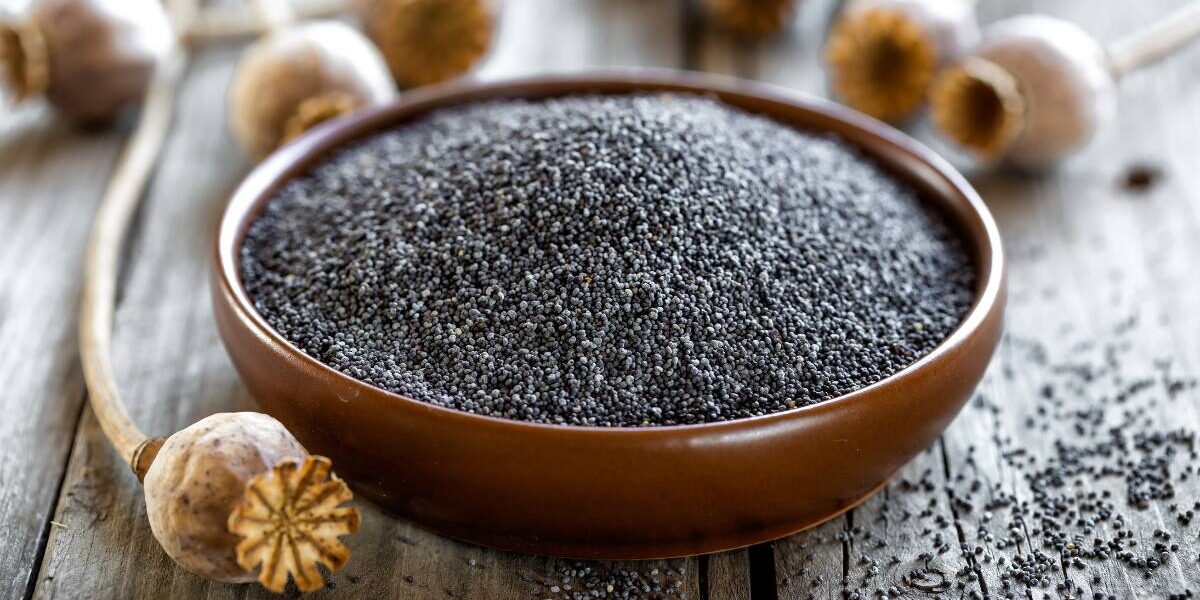
Poppy plants are well known to contain opiates like heroin (diacetylmorphine) and codeine. One component you don’t often hear about is thebaine, after the ancient Greek for the Egyptian city of Thebes.
What is thebaine?
Thebaine, also called paramorphine, is chemically very similar to codeine and morphine. But unlike these two well-known drugs, which are powerful depressants, thebaine has stimulatory effects.
Thebaine has no direct therapeutic use. It is often used as a base to synthesize oxycodone, naltrexone (a drug to treat opiate overdoses) and the analgesic hydromorphone.
High doses of thebaine induce symptoms similar to strychnine poisoning including, convulsions, generalised muscle spasms including, facial muscle spasms, tachycardia, hypertension, and rapid breathing, eventually culminating in convulsions and cardiac arrest.
What are the dangers of poppy seeds?
Processed poppy seeds – such as those used in poppy-seed buns, bread, and strudel – pose no threat to consumers, although they may give you a nasty shock if you fail a drug test!
By contrast, unwashed poppy seeds may potentially be lethal. In Texas, in 2017, a review was done of apparent opiate overdoses resulting from home-brewed poppy seed tea that concluded even moderate doses of poppy seed tea may yield lethal doses of morphine and thebaine if prepared incorrectly.
How is poppy seed tea prepared?
The most common way people prepare poppy tea is by boiling up poppy husks. Poppy husks are commonly referred to as poppy straw. Poppy straw is popularly used in some herbal decoctions. It comes from opium poppy husks and capsules that have been mechanically dried with the ripe poppy seeds excluded.
Poppy straw is used legally as a major source of pharmaceutical morphine. Mid-last decade only three countries – Australia, Spain, and France – accounted for 99% of global straw production, with the major share coming from Australia.
Poppy tea has become very popular in Australia over the last few months – leading to a handful of critical presentations to Emergency Departments across the country, which has prompted the State health authorities to issue a general warning.
Maybe we should all drink Earl Grey tea instead? What are your thoughts on poppy seed tea?
Learn more
Contact us today to learn how you can keep your workplace safe from drugs and alcohol.
Alcohol is still Australia’s most abused substance. Yet amphetamine use comes in second and continues to rise.
Read more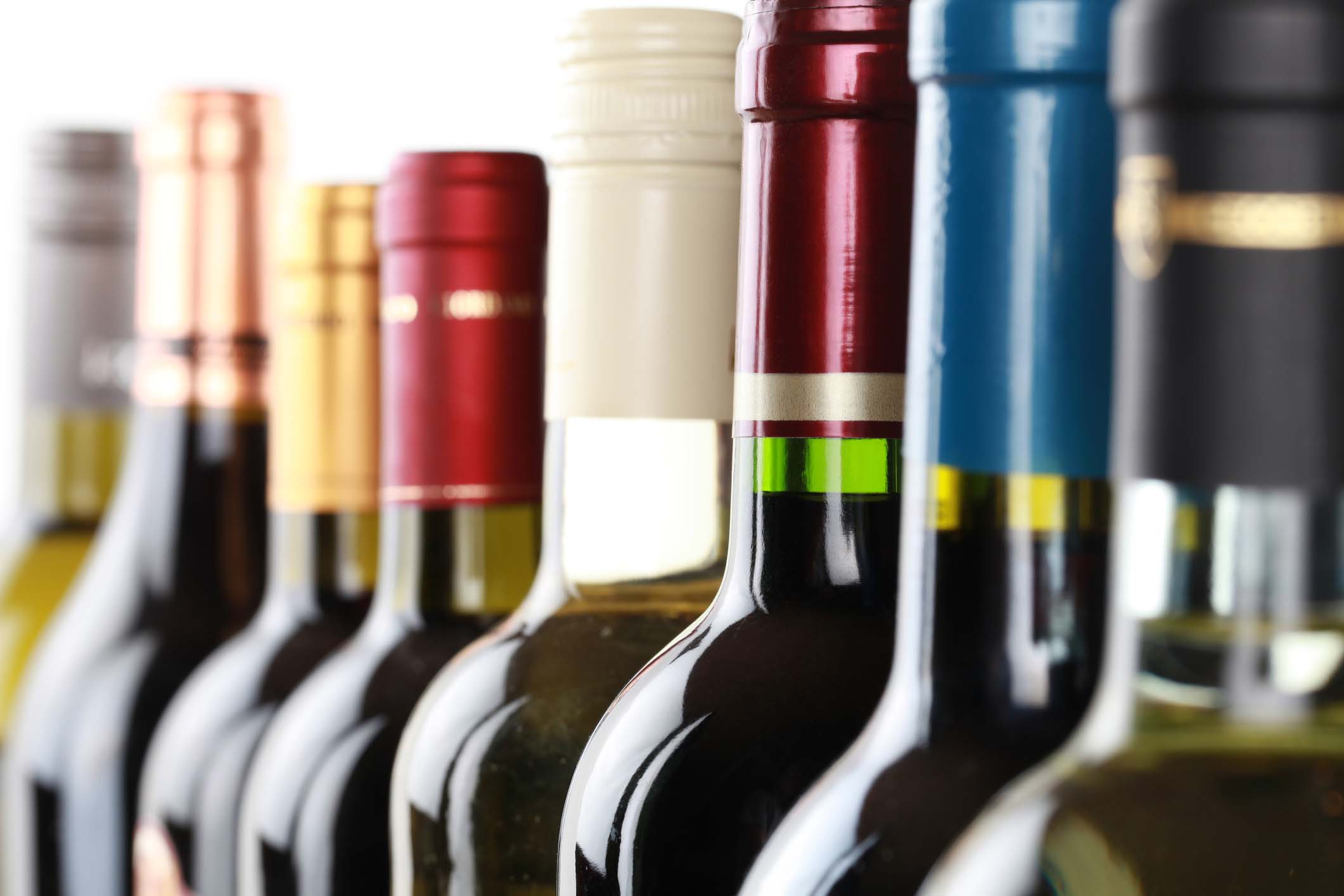
Alcohol is still Australia’s most abused substance. Yet amphetamine use comes in second and continues to rise.
These are the findings of the 2019-2020 alcohol and drug treatment service report by the Australian Institute of Health and Welfare (AIHW). During that period, over 139,000 Australians sought addiction treatment. One-third (34%) of the cases were for alcohol and over a fourth (28%) were for methylamphetamines.
The general trend

What National Wastewater studies show
At first glance, the AIHW report seems to slightly contradict the National Wastewater Drug Monitoring Program (NWDMP) reports done by the Australian Criminal Intelligence Commission (ACIC).
According to the NWDMP reports from the past year and a half, the overall national alcohol consumption is still at relatively standard levels. In fact, from August to December of 2020, the average consumption of alcohol on the regional level seems to have decreased.
However, both the AIHW and ACIC reports are in agreement on the general rise in methylamphetamine use.
The pandemic’s effect on alcohol and amphetamine use
What’s not readily evident is how Australia’s imposed lockdowns for the COVID-19 pandemic affected the timing of alcohol and amphetamine use. The reason why it isn’t obvious lies with the timing of the AIHW and ACIC reports.
First of all, these are one-time respondent surveys or wastewater samples. These tests occur only once or a few times each year. Thus, these do not reflect smaller fluctuations in drug users’ behaviour from week to week or month to month.
In other words, any influence the pandemic would have in any study performed during the first half of 2020 would go unmeasured. There would be less of an effect on other studies later in the same year.
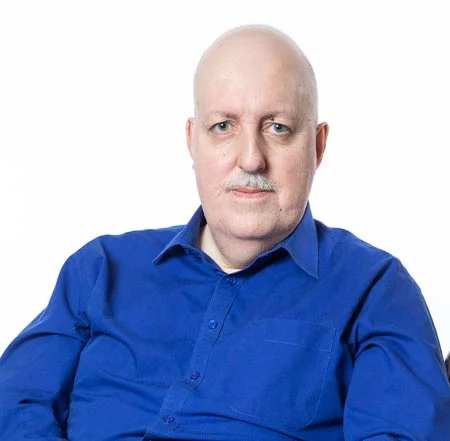
Alcohol consumption
Safework Health chief toxicologist Dr Phil Tynan further explains the pandemic’s effect.
“During the lockdowns, the ordinary weekend increase in alcohol consumption became less prominent,” he says. “There was likely a lower difference between weekday and weekend use. Pubs, clubs and restaurants serving alcohol were closed or had restricted numbers.”
But once the initial restrictions were eased, the customers returned. This matches the resurgence in alcohol use detected by the AIHW report.
“That may have worsened underlying alcohol dependency in vulnerable people,“ says Dr Tynan.
Amphetamine use
Safework Health regularly performs workplace drug tests for clients all around Australia. Their tests from 2019 to 2020 also reflect the same trend for methylamphetamine.
Again, in the beginning, there was a temporary decline in consumption immediately after the imposition of lockdown restrictions. Afterwards, when the restrictions were lifted, the high usage levels returned. These were nearly as high as those seen in December 2019.
Dr Tynan attributes this rebound to the country’s illegal methylamphetamine industry.
“Australia has a vigorous cottage industry of homegrown meth manufacture,” he says. ”The pandemic adversely affected many industries in the last year. Sadly, meth manufacture does not appear to be one of them.”
Learn More
Contact us today for information on how we can keep your workplace safe from drugs and alcohol.
References:
- Alcohol remains a national drug of concern – Australian Institute of Health and Welfare. (2021). Australian Institute of Health and Welfare; Australian Government. https://www.aihw.gov.au/news-media/media-releases/2021-1/july/alcohol-remains-a-national-drug-of-concern
- National Drug Strategy Household Survey 2019, Summary – Australian Institute of Health and Welfare. (2020). Australian Institute of Health and Welfare; Australian Government. https://www.aihw.gov.au/reports/illicit-use-of-drugs/national-drug-strategy-household-survey-2019/contents/summary
- National Wastewater Drug Monitoring Program Report 11. (2020, October). Australian Criminal Intelligence Commission; Australian Criminal Intelligence Commission. https://www.acic.gov.au/sites/default/files/2020-10/NWDMP_R11%20-%20FINAL.pdf
- National Wastewater Drug Monitoring Program Report 12. (2021, February). Australian Criminal Intelligence Commission; Australian Criminal Intelligence Commission. https://www.acic.gov.au/sites/default/files/2021-02/National%20Wastewater%20Drug%20Monitoring%20Program%20Report%2012.PDF
- National Wastewater Drug Monitoring Program Report 13. (2021). Australian Criminal Intelligence Commission; Australian Criminal Intelligence Commission. https://www.acic.gov.au/sites/default/files/2021-06/NWDMP-R13_v7_WEB%20singles.pdf
Learn about increasing cocaine use amongst Australians.
Read more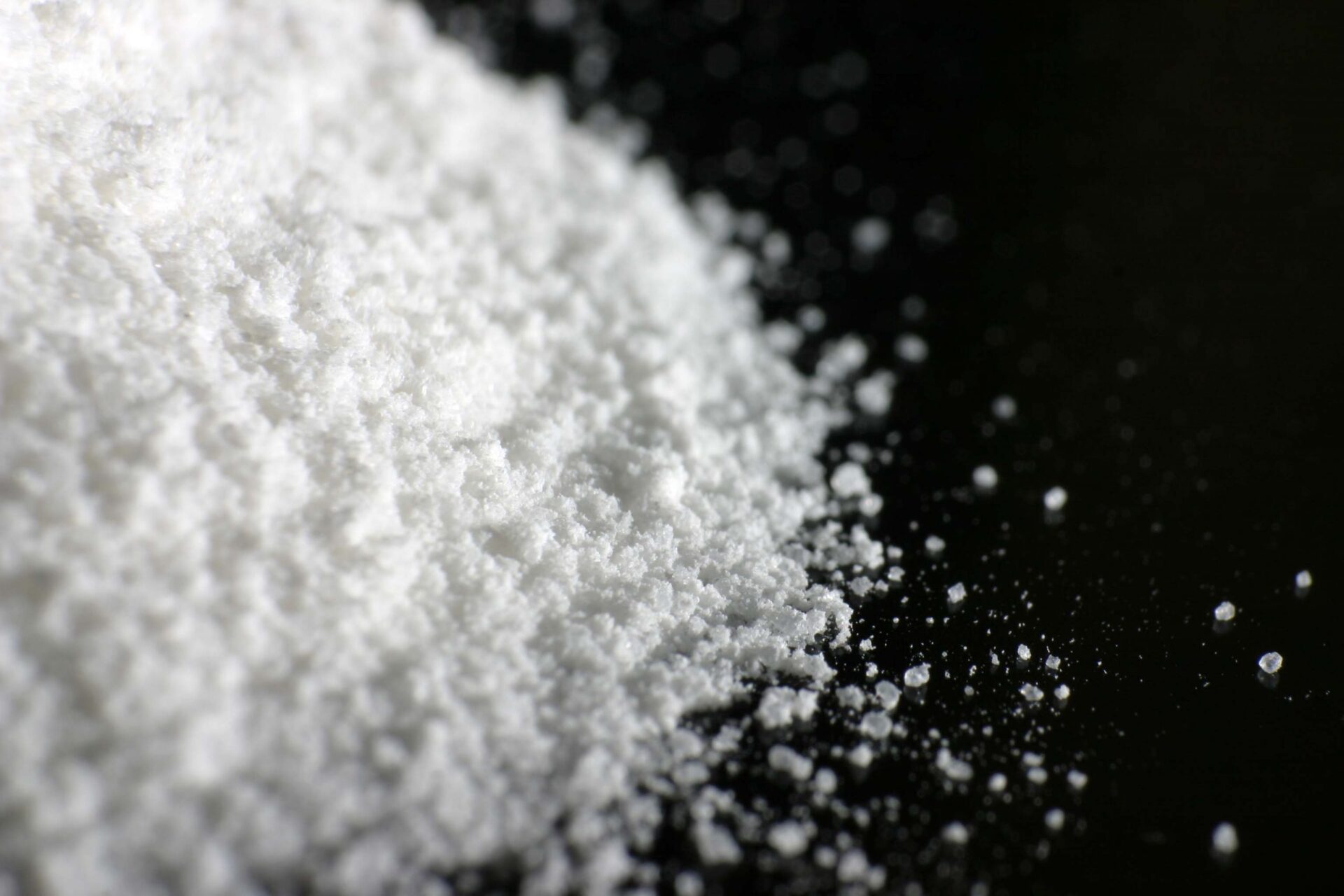
If you need a poster boy for Australia’s illegal drug industry, look no further than former Olympic athlete Nathan Baggaley.
In April 2021, the Brisbane Supreme Court found the two-time Olympic silver medalist kayaker and his brother Dru guilty of smuggling cocaine into the country. The charges were based on their arrest back in 2018. Police had intercepted a boat they hired to receive goods from a foreign ship some 360 kilometres off the coast. (Dru Baggaley himself was aboard the boat together with skipper Anthony Draper.) The ship offloaded some 200 million dollars worth of cocaine.
The Baggaleys will now be sentenced at a later date. However, this isn’t the first time they’ve dabbled in crime. Both Nathan and Dru Baggaley have a history of dealing in illegal drugs. They have even served time for it. But with this latest offence, the brothers could face a lifetime in prison.
A far too common story
At first glance, Nathan Baggaley’s case seems extraordinary – a fall from grace of Olympic proportions, so to speak. But unfortunately, an alarming number of seemingly respectable Australians have gone down similar paths.
Just a few examples:
- For instance, former Australian Olympic swimmer Scott Miller was arrested in Rozelle last February 2021. He was charged for allegedly supplying large amounts of methamphetamines (“ice”) to various towns in NSW.
- Meanwhile, a 66-year old central Queensland mother was sentenced to four years in jail. She had aided her wealthy businessman son to flee the country. Her son had previously been arrested by authorities for operating a cocaine importation syndicate. He was out on bail when he attempted to escape. (He was later caught.)
- In March 2021, Sydney police arrested five men for having ties to an international cocaine syndicate operating in the country. One of the men was a former property developer.
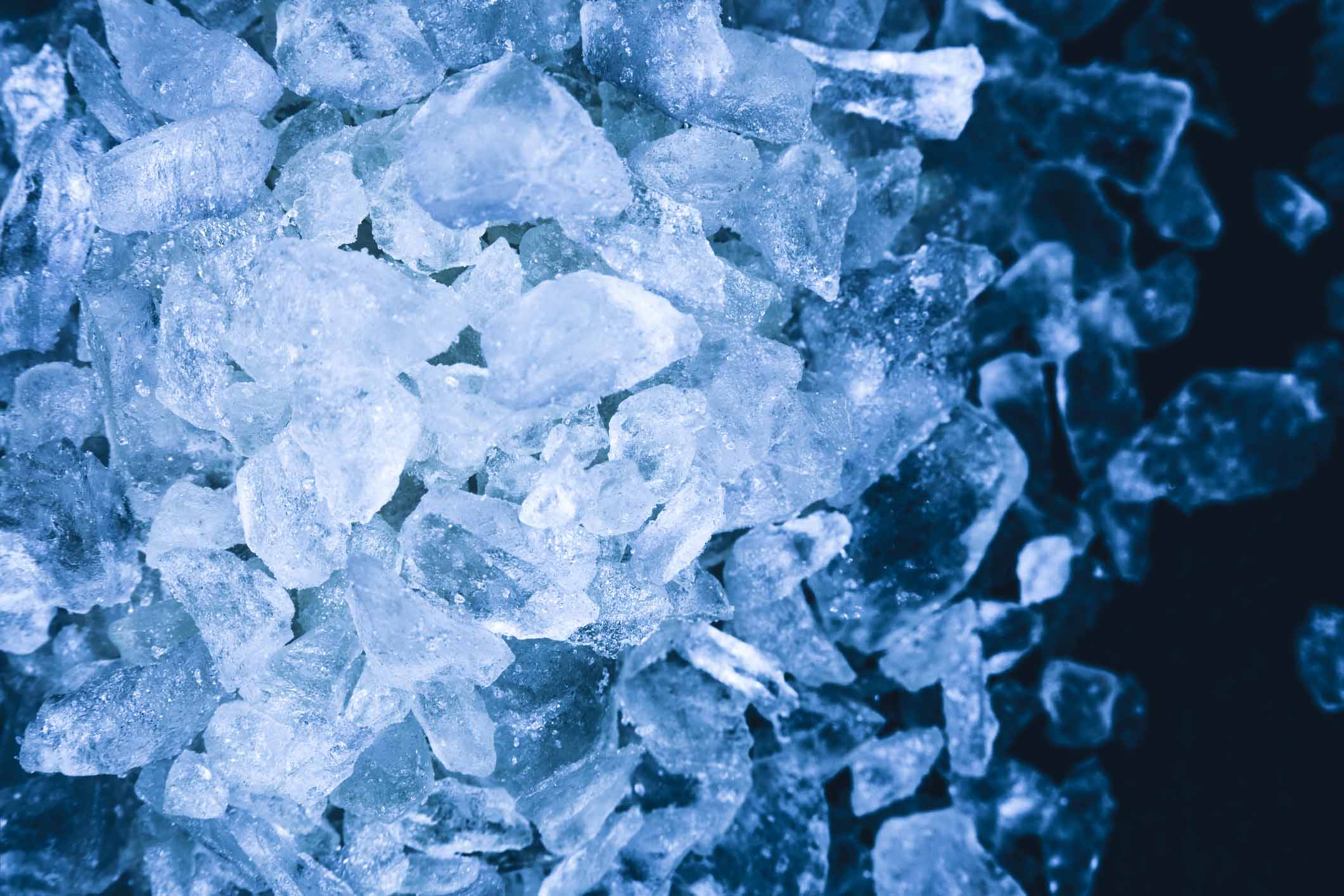
And these are just the tip of the iceberg. Back in November 2020, Vice World News reported that Sydney police have arrested hundreds of people for drug dealing over the last few years. Most of them were people with “normal” jobs. Police found tradespeople, real estate agents, and even fitness influencers among them.
Rising addictions
The fact is, for the past decade or so, more and more Australians have gotten mired in illicit drug use. More addictions mean a growing demand. That translates to more homegrown drug dealers. In other words, there are more criminals for police to battle with.
Even the COVID-19 pandemic has barely made a dent in Australians’ overall year 2020 consumption of the most popular illegal drugs. According to the latest National Wastewater Drug Monitoring Program report, the annual consumption of cocaine, MDMA, and heroin over the past year are at the highest levels ever recorded.
In other words, any influence the pandemic would have in any study performed during the first half of 2020 would go unmeasured. There would be less of an effect on other studies later in the same year.
A spotlight on the cocaine trend
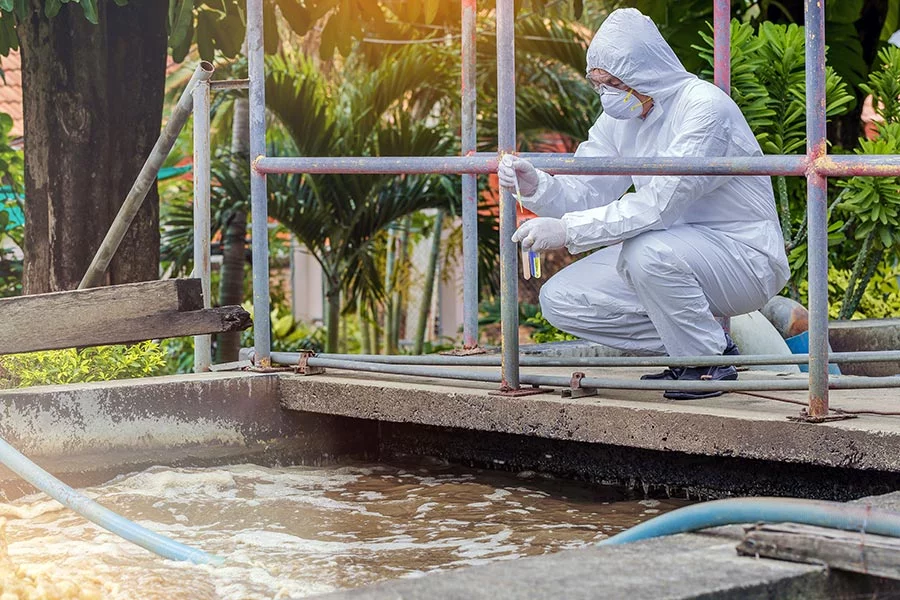
That’s because, over the past four years, cocaine has become popular. This is especially true among higher-paying users in Australia’s capital cities and urban centres. The country’s urbanites are willing to pay a premium for cocaine. Prices can often go above $300 per gram (compared to the average global price of $127 per gram).
Smugglers also find it easy to ship cocaine straight from South American and into Australia. It’s even easier than smuggling it into the United States. Moreover, they can charge a higher mark-up for the cost of importation.
And despite these higher prices, the cities’ demand for the drug continues to increase. According to the Australian Criminal Intelligence Commission, many people believe cocaine is the “safer” recreational drug. They associate it with glamour and financial success. It’s not surprising, then, that the latest National Wastewater Drug Monitoring Program reported an 85.6% increase in cocaine consumption.
Cocaine usage is also highest in Sydney; it’s become Australia’s “cocaine capital.” The city has a growing appetite for the substance. It treats it as a party drug. It’s not unheard of for young professional Sydneysiders to take a sniff during after-work drinks.
The destructive power of cocaine
Cocaine is sold on the international black market in two forms. First, there’s the milder white powder which is smoked or snorted in. Next, there’s the more addictive free base form known as “crack cocaine.”

The trouble with cocaine is that it is more addictive than heroin. This leads to a higher frequency of abuse. Habitual users can experience dangerously high blood pressure. This can eventually lead to heart failure.
There’s even a substantial decline in working memory within the first 48 hours after use. Higher or more frequent doses cause grandiose delusional mania and aggressive paranoia.
The influence of cocaine doesn’t stop with cognitive impairment, either. Once the drug wears off, there are also the associated withdrawal symptoms. These include depression, irritability, emotional instability, and interrupted sleep. These symptoms can last for weeks.
Individuals that become addicted to cocaine pose a huge problem for families, businesses, and whole communities. Aside from self-destruction, cocaine addicts can profoundly disrupt or destroy their relationships with their loved ones and friends. Their addiction also draws in more criminal activity into their neighbourhoods. It harms public health and safety.
A growing challenge for workplace management
Given the growing social acceptance of cocaine in Australia today, there’s hardly any sector of the country that’s safe from its influence.
And it’s hard to discern who does or doesn’t require cocaine addiction rehab. You can’t tell simply by looking at their appearance. For instance, at one luxury rehabilitation clinic in Queensland called The Banyans, it’s not unusual to see well-dressed and respectable-looking patients. They check themselves in for cocaine addiction treatment.
“The average patient looks like someone that you work with in the office day-to-day,” remarks Ruth Limkin, The Banyans chief executive. “And you may have no idea they have developed a dependency.”
Ideally, we would like to eradicate Australia’s cocaine habit. However, at this stage, businesses will be wise to include drug testing into their workplace safety programs. Without it, there is no telling who is affected.
Proper testing for cocaine
In addition to that, detecting cocaine use can be difficult. According to Safework Health national chief toxicologist Dr Phil Tynan, not just any urine drug test will do.
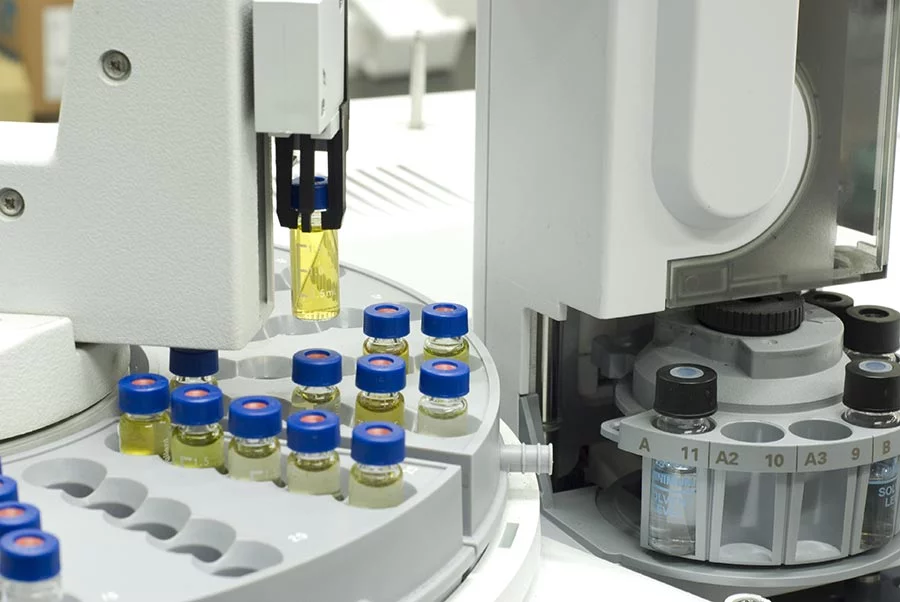
“Cocaine itself, the parent drug, has only a short detection window in urine of between 1 to 5 hours,” Tynan warns. “Oral fluid is not an ideal sample for cocaine testing, either. The drug may only be detected up to 24 hours after use.”
Therefore, it’s best to employ the services of a reputable drug testing company. They can test for the presence of the cocaine metabolite BZE (Benzoylecgonine). This metabolite has a long window of detection between 2 to 4 days on average, after a standard 100mg dose.
Dr Tynan is somewhat bemused that many people aren’t aware of how scientifically robust the method is.
“One excuse often given by positive cocaine donors is that they recently had a medical or dental procedure involving procaine,” he says. “But despite the similarity in name, procaine and its derivatives do not get metabolized to cocaine. These cannot be confused for cocaine or its metabolites.”
Thus, it’s also better for companies to plan for periodic cocaine metabolite tests. It can better identify any problems among employees. It really is the only way for your business to cope with the prevalence of cocaine abuse. At the very least, you control its spread where still you can – and keep your workplace safe.
References:
The Baggaley case and other arrests:
- Nathan Baggaley: Olympian tried to smuggle $150m of cocaine – BBC News. (2021, April 1). BBC News; BBC News. https://www.bbc.com/news/world-australia-56607790
- Siganto, T. (2021, April 1). Olympian Nathan Baggaley and brother found guilty of failed $200m cocaine smuggling plot – ABC News. ABC (Australian Broadcasting Corporation); ABC News. https://www.abc.net.au/news/2021-04-01/qld-court-nathan-baggaley-olympian-guilty-drug-smuggling/100041138
- Rendall, J. (2021, February 22). Mother jailed over helping son flee Australia to avoid drug trafficking charges – ABC News. ABC (Australian Broadcasting Corporation); ABC News. https://www.abc.net.au/news/2021-02-22/qld-court-elizabeth-anne-turner-jailed-help-son-escape/13180060
- Sydney News: Men arrested over cocaine syndicate Sydney. (2021, March 30). 9News – Latest News and Headlines from Australia and the World; 9News. https://www.9news.com.au/national/five-men-arrested-over-suspected-cocaine-syndicate/d78bce91-30bc-4ee8-b9b8-24cf11d3f05e
- Gyte, S. (2021, March 25). Nathan Baggaley: Former Olympic hero and brother face drug smuggling charges. 9News – Latest News and Headlines from Australia and the World; 9News. https://www.9news.com.au/national/dru-baggaley-former-olympic-hero-and-brother-face-drug-smuggling-charges/cc86e075-6224-4016-9fee-28a17893e9d7
- Partridge, E. (2021, February 16). Sydney News: Olympic swimmer Scott Miller charged with “directing” criminal drug syndicate. 9News – Latest News and Headlines from Australia and the World; 9News. https://www.9news.com.au/national/scott-miller-arrested-alleged-drug-bust-2-million-dollars-worth-ice-concealed-in-candles/0d4e6d92-9f07-42d2-ad68-4d56a8960a90
- Gibbs, N. (2021, March 22). Cocaine plot trial shown air surveillance | The Macleay Argus | Kempsey, NSW. The Macleay Argus; http://www.facebook.com/argusnews. https://www.macleayargus.com.au/story/7178041/cocaine-plot-trial-shown-air-surveillance/
- Visentin, L. (2015, December 18). Olympic kayaker Nathan Baggaley jailed for role in drug syndicate. Brisbane Times; Brisbane Times. https://www.brisbanetimes.com.au/national/nsw/olympic-kayaker-nathan-baggaley-jailed-for-role-in-drug-syndicate-20151218-glqwcp.html
- Irby, R. (2009, June 5). The rise and fall of Baggaley. The Daily Telegraph; Nationwide News Pty Ltd. https://www.dailytelegraph.com.au/news/nsw/tweed-heads/the-rise-and-fall-of-baggaley/news-story/4ff7adfe27297ede81735d3deda57615
Australia’s drug / cocaine problem:
- Nichols, S. (2020, November 6). How Sydney Became Australia’s Cocaine Capital. VICE – World News; Vice Media Group. https://www.vice.com/en/article/4ayxwg/how-sydney-became-australias-cocaine-capital
- White, V. (2019, February 25). Australia needs a new strategy to deal with illicit drug use | The Strategist. The Strategist; Australian Strategic Policy Institute (ASPI). https://www.aspistrategist.org.au/australia-needs-a-new-strategy-to-deal-with-illicit-drug-use/
- Coyne, J. (2019, May 1). Australia has a drug problem. Policy Forum – Asia & the Pacific Policy Society; Asia & the Pacific Policy Society. https://www.policyforum.net/australia-has-a-drug-problem/
- Twelfth wastewater report reveals Australians waste more than $8.9 billion a year on drugs. (2021, February 25). Mirage News; Mirage.News. https://www.miragenews.com/twelfth-wastewater-report-reveals-australians-518954/
- National Wastewater Drug Monitoring Program – Report 12. (2021, February). Australian Criminal Intelligence Commission (ACIC); Australian Criminal Intelligence Commission (ACIC). https://www.acic.gov.au/sites/default/files/2021-02/National%20Wastewater%20Drug%20Monitoring%20Program%20Report%2012.PDF
- Hunter, F., & Ward, M. (2021, April 4). Sydney and cocaine: an illicit love affair for the ages. The Sydney Morning Herald; The Sydney Morning Herald. https://www.smh.com.au/national/nsw/sydney-and-cocaine-an-illicit-love-affair-for-the-ages-20210225-p575uz.html
- O’Brien, M. S., & Anthony, J. C. (2005). Risk of Becoming Cocaine Dependent: Epidemiological Estimates for the United States, 2000–2001. Neuropsychopharmacology, 5, 1006–1018. https://doi.org/10.1038/sj.npp.1300681
- How Addiction Affects the Family – Addiction Center. (n.d.). Addiction Center; Recovery Worldwide, LLC. Retrieved May 28, 2021, from https://www.addictioncenter.com/addiction/how-addiction-affects-the-family/
- Economic consequences of drug abuse (Chapter 1). (2013). INCB Report ; International Narcotics Control Board. https://www.incb.org/documents/Publications/AnnualReports/Thematic_chapters/English/AR_2013_E_Chapter_I.pdf
- de la Torre, R., Ortuño, J., Luisa González, M., Farré, M., Camí, J., & Segura, J. (1995). Determination of cocaine and its metabolites in human urine by gas chromatography/mass spectrometry after simultaneous use of cocaine and ethanol. Journal of Pharmaceutical and Biomedical Analysis, 3, 305–312. https://doi.org/10.1016/0731-7085(95)01284-r
Synthetic drug abuse in the workplace is a serious problem, but sadly it’s not being discussed enough.
Read more
Synthetic drug abuse in the workplace is a serious problem, but sadly it’s not being discussed enough. Drug users are typically very good at hiding their habits, especially if they’re at work. And as a society, we’re generally taught not to tell on our coworkers. This makes it harder to address the situation.
However, as a business leader, your duty involves keeping your company and employees safe. You need to confront your workers if you think they’re posing a serious threat not only to themselves but others as well. This includes taking on the issue of synthetic drug abuse at work no matter how difficult the conversation might be.
What dangers do synthetic drugs pose to the workers? How can you protect your workplace from the impacts of these drugs? Read on to find out the answers.
What are synthetic drugs?
Synthetic drugs, also known as new psychoactive substances (NPS), are chemical compounds made primarily in laboratories. They mimic the effects of illicit drugs such as cocaine, cannabis, ecstasy, and LSD. However, they are often more potent and deadlier than regular drugs.
NPS manufacturers label their products as ‘not for human consumption’ to avoid government regulation. They also alter the drugs’ chemical composition to evade legal prohibitions on their sale or possession and prevent law enforcement from detecting them. This makes it harder for regulators to determine how these products can affect people’s health. Australia’s laws prohibiting the sale and possession of NPS are designed to be expansive and usually cover analogs of the commonly abused drugs.
Most of Australia’s illicit drug supplies come from other countries such as those in Asia, North America, and Europe. This includes many of the chemical components used in the creation of known synthetic drugs.
Synthetic drugs vs regular drugs
Today, we know many of the synthetic drugs started as derivatives (analogs) of other chemical compounds and were intended for medical research use only, never for human consumption. Therefore, many of the NPS are incredibly potent and may have serious health consequences even at low doses.
As awareness of the drugs’ effects and potency became more widely known, people started using synthetics as substitutes for regular drugs. This led many drug dealers to manufacture their synthetic drug variants in secret laboratories.
As more synthetic drugs entered the market, drug makers began experimenting with different formulations. These newer drugs may target the same parts of the brain as their regular counterparts but often have other unselective effects on the brain. They tend to be more potent and faster-acting than other established products.
For example, drug abusers may incorrectly use synthetic cannabinoids as a substitute for natural marijuana. Some people also use Fentanyl as an alternative to heroin.
Since most synthetic drugs are made in clandestine laboratories, such drugs’ purity and quality often vary (even from the same source), and dangerous contamination issues are not uncommon. The sheer number and variety of NPS monitor the production and distribution of these drugs by the authorities an arduous task.
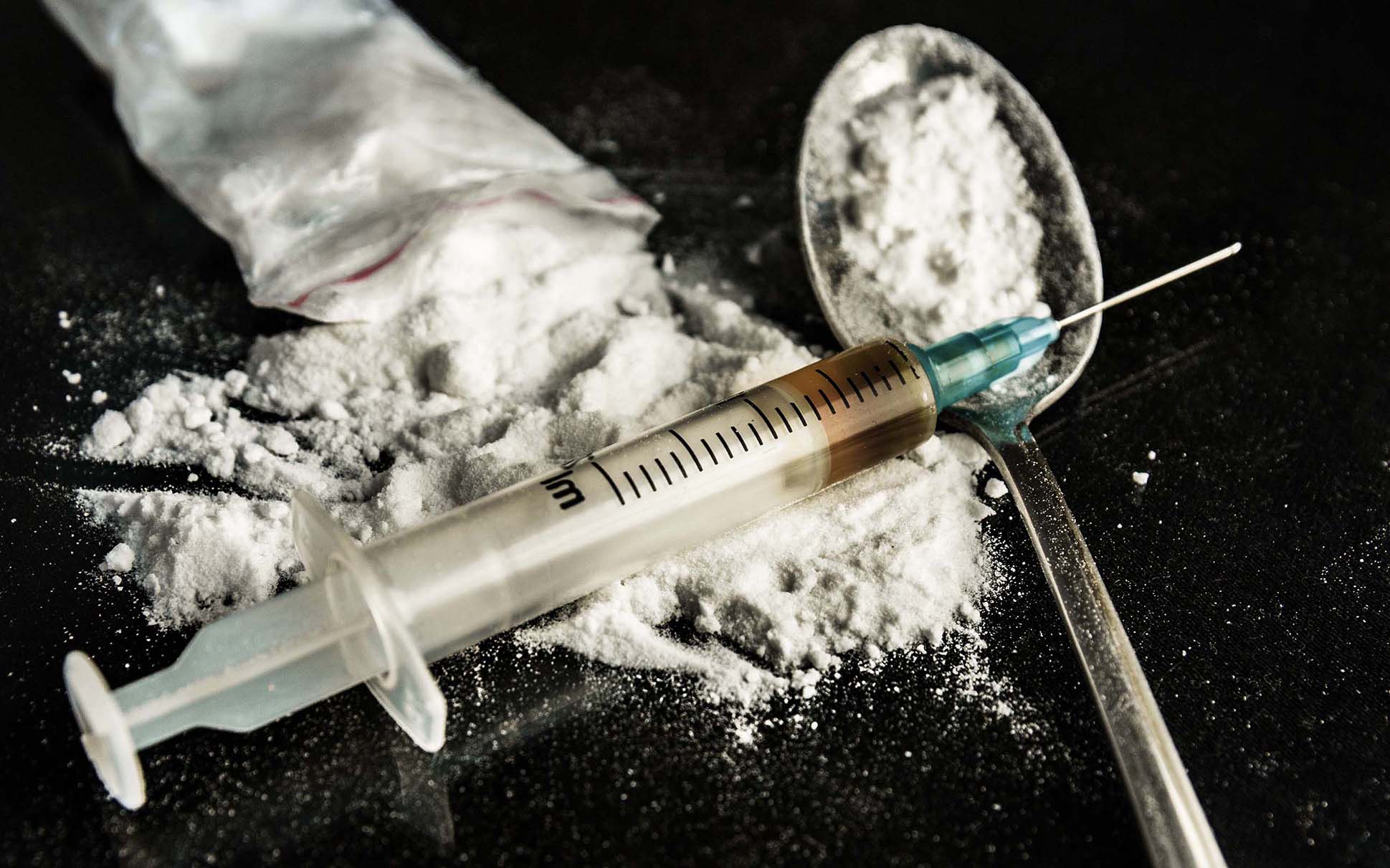
Who uses synthetic drugs?
Synthetic drugs are now more readily available to the public than before. People can easily buy Spice, bath salts, N-bomb and other similar products from convenience stores, head shops and party venues. Some online stores also sell synthetic drugs labelled as ‘research chemicals’ and deliver them straight to the buyer’s doorstep.
This convenience helped make NPS more appealing to younger audiences. Before, people would have to buy illicit drugs from dealers in back alleys and seedy establishments. But with synthetics, they can order their supplies over the Internet. It opened the doors for teenagers and young adults to engage in synthetic drug abuse.
In Australia, NPS abuse figures remained low in 2019. The Australian Institute of Health and Welfare reported that synthetic cannabinoid use dropped from 1.2% to 0.2%. Other synthetic drugs also saw a significant decrease in their lifetime and recent use figures. The AIHW study involved participants aged 14 and older.
Commonly abused synthetic drugs in the workplace
Some of the most popular drugs are synthetic cannabinoids, synthetic stimulants, synthetic LSD and synthetic opioids. Despite their relatively low frequency of use, these drugs can have a disproportionate effect on workplace safety and performance.
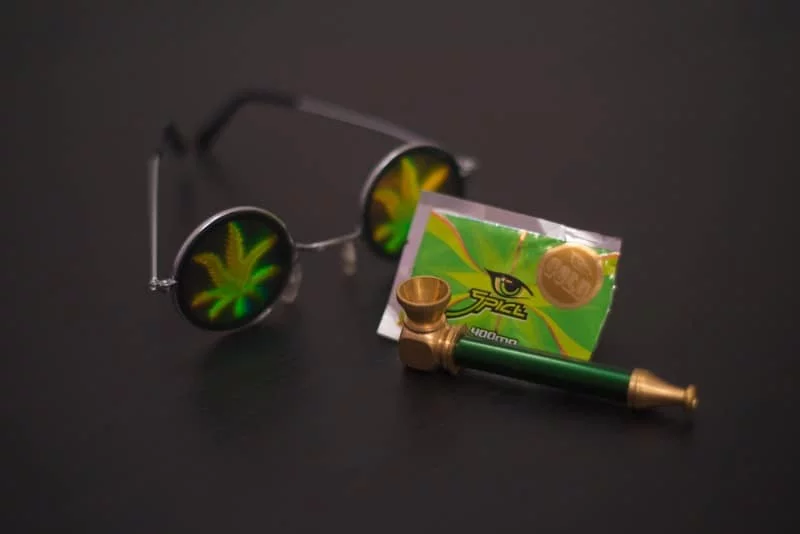
Synthetic cannabinoids
Illicit drug dealers market synthetic cannabinoids (SCs’) as a substitute for natural marijuana. SC’s are not a single drug; they are a class of drugs with a wide variety in potency and side effects. These drugs mimic 9-tetrahydrocannabinol (THC) effects, which is the primary psychoactive ingredient of marijuana.
Although synthetic cannabinoids bind to the brain’s CB1 receptors, much like marijuana, their binding is far more potent, and they bind CB2 receptors. Unlike marijuana, the primary metabolites of most Synthetic Cannabinoids are also psychoactive. Binding CB1 triggers the euphoric or psychoactive effects of the drugs. Synthetic cannabinoids produce more potent effects, weight per weight, than THC, and longer-lasting effects.
Marijuana vs synthetic cannabinoids
Marijuana has an extensive therapeutic index. It is extremely difficult to die from an overdose of marijuana. However, this does not hold for SC’s. There is little evidence that cannabis can induce drug dependence, but SC’s do so often.
While cannabis may cause psychosis in under 2% of users (commonly young persons, who may already be at risk of developing schizophrenia) – marijuana contains cannabidiol (CBD), a natural antipsychotic agent. SC’s, however, do induce psychoses and not infrequently. This became such a problem that some drug dealers included sedatives and antipsychotics like Zaleplon and Phenazepam with their SC’s.
Drug users take synthetic marijuana by smoking it. Some people use a pipe to inhale cannabinoids, while others roll the substance in paper and smoke them like cigarettes.
Another way to take the drugs is through the bucket (water pipe) method. Users place the synthetic cannabinoid in a water pipe-like mechanism and heat it using a lighter. They then inhale the drug directly into their lungs once the substance turns into water-distilled smoke.
The most common side effects of synthetic cannabinoid use include increased heart rate and blood pressure, headache, nausea, and vomiting. Users may also show sudden behaviour changes such as agitation, irritability, and paranoia. In severe cases, drug use may result in acute renal failure and severe damage to the central nervous and cardiovascular systems.
Examples of synthetic cannabinoids
Synthetic cannabinoids are a relatively recent invention, but despite the bad publicity the side-effects have created, they are fast becoming popular among drug abusers. Drug dealers often sell them under different street names to avoid government detection. These names include:
- Spice
- K2
- Herbal incense
- Black Mamba
- Mr Nice Guy
- Solar Flare
- Moon Rocks
The problem is made worse because SC’s are sold under these names, but the actual chemical composition of products like ‘Spice’ and ‘K2’ change from year to year. JWH-018 used to be the major component of Spice sold on the streets – nowadays, it is more likely to be AM-2201 or any of a host of new SC’s.
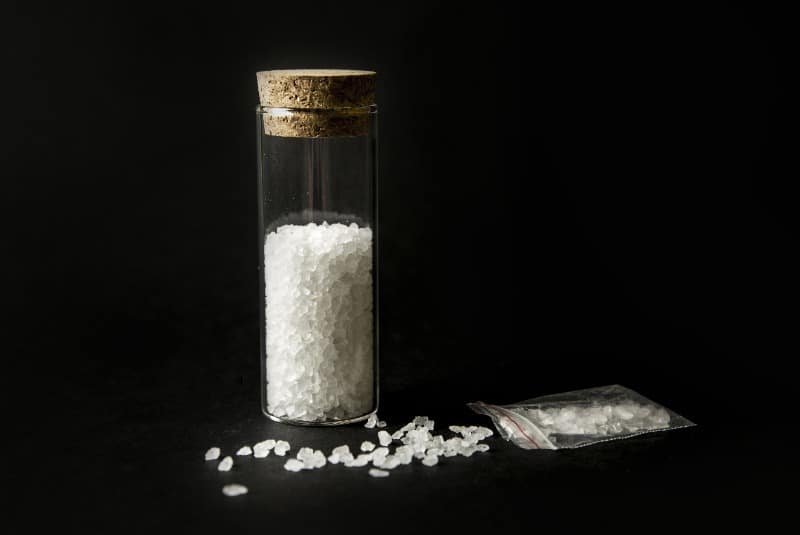
Synthetic stimulants
Chemically speaking, cathinone are ‘keto’ analogs of amphetamine. Like speed, they are central nervous system stimulants that trigger a rapid release of the neurotransmitter dopamine in the brain’s reward centres.
People have been abusing synthetic stimulants for years, although they may know them by a different name: bath salts (because they look like Epsom Salts). Cathinone is present naturally in the East African stimulant khat, but Bath Salts are synthetic cathinone derivatives.
Two of the most common cathinone derivatives in bath salts are 3-4 methylenedioxypyrovalerone (MDPV) and mephedrone. These drugs have effects that peak earlier, are much more powerful, and clear faster from the brain than ecstasy. This is why they have a much greater potential for repeated binge use and cause strong cravings for reuse. MDPV especially has a self-administration potential nearly as bad as crystal meth.
Drug dealers value synthetic stimulants for their highly potent hallucinogenic effects. They market the products as better alternatives for cocaine, amphetamine, and ecstasy (MDMA). The drugs often come in white or brown crystalline powder form but also sold in other colours.
There are several ways to take bath salts. They can be ingested orally, snorted, smoked, or injected. Some drug users also insert the synthetic stimulants rectally or vaginally.
Bath Salt side-effects include increased heart rate, blood pressure, chest pain, nosebleeds, sweating, nausea, and vomiting. Drug use can also trigger behavioural changes such as agitation, irritability, panic attacks, depression, hallucinations, and paranoia.
Examples of synthetic stimulants
To avoid detection, synthetic stimulants are sold under different and often whimsical names. These include:
- Bliss
- Cloud Nine
- Vanilla Sky
- White Lightning
- Lunar Wave
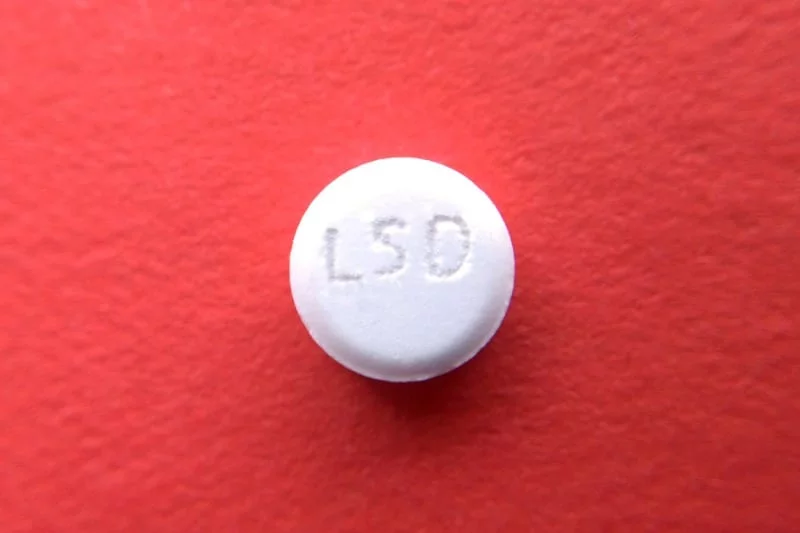
Synthetic LSD
Synthetic LSD is a class of drugs, also known as ‘N-bomb’ or ‘Smiles’. They are highly potent stimulating synthetic hallucinogens derived from the chemical N-methoxybenzyl-methoxyphenylethylamine (NBOMe).
Scientists originally designed NBOMe for use in mapping areas of the human brain. However, criminal syndicates found a way to recreate it in clandestine laboratories. They now sell the drug on the black market for nonmedical use.
N-bomb triggers LSD-like hallucinations, although they are more visual and less complex than with LSD. Like LSD, it can also trigger outbursts of paranoid psychosis. As a phenethylamine, side effects can include increased heart rate and blood pressure, hyperthermia (overheating), muscle spasms, nausea, confusion, delirium, and seizures.
What makes N-bomb so dangerous is that it is at least sixty times more potent than LSD and, unlike LSD, is lethal at high doses. Worse than that, N-bomb induces physiological tolerance, so with repeated use, higher doses are required for the same effect – which can easily have deadly consequences.
Many people use it as an alternative to regular LSD, but they do not fully understand its effects. They often lose track of just how much of the drug they have already taken. This leaves them more vulnerable to fatal overdoses.
Drug users have come up with creative ways to take N-bomb. Since the synthetic LSD does not have any effect when swallowed, it is often placed under the tongue instead. This allows users to absorb the drug much better. Meanwhile, some people choose to snort, smoke, inject or vaporise and inhale the N-bomb. Others have also inserted the synthetic drug rectally.
Examples of synthetic LSD
Aside from N-bomb and Smiles, synthetic LSD can also be bought under several other street names, including:
- 25I
- BOM-CI or Cimbi-5
- Dime
- Legal Acid
- New Nexus
- Solaris
- GNOME

Synthetic opioid
Fentanyl is a semi-synthetic opioid initially developed to help cancer patients manage pain during their treatment. It is 50 to 100 times more potent than morphine.
These same powerful opioid properties are what led drug users to abuse the product. They often use the drug to increase the potency of regular heroin. Fentanyl abuse, along with another semi-synthetic opioid (Oxycodone), is at the heart of the ongoing US’ Opioid abuse crisis.’
Unlike most other synthetic drugs, Fentanyl has proven medical use. Doctors prescribe the drug as pain medication for people who have undergone surgery. Patients can take Fentanyl as a shot, a patch placed on their skin, or as lozenges.
Side effects of fentanyl abuse include confusion, constipation, drowsiness, nausea, sedation, breathing problems and unconsciousness. It can also cause users to experience extreme happiness. If taken in high doses, the drug can lead to overdose and death – the problem being, because the onset of fentanyl effects is rapid and the drug is so potent, it is relatively easy to overdose.
Examples of synthetic opioids
People can buy Fentanyl from pharmacies if they have a valid prescription from their doctor. However, drug dealers also sell synthetic opioid illegally on the streets under different names. These include:
- Apache
- China Girl
- China White
- Dance Fever
- Jackpot
- Murder 8
Trends of synthetic drug use compared to regular drugs
Australia doesn’t have as big a problem with synthetic drug use as it does with illicit drugs. However, this doesn’t guarantee that things are going to stay the same for years.
Misconceptions about using illicit drugs
Many people believe that consuming ‘socially acceptable’ drugs like ecstasy is not a cause for concern. Some individuals even think that they can report to work after ecstasy because it only has benign effects. This carefree attitude towards drug abuse often leaves users vulnerable to more powerful and deadlier substances.
Unfortunately, we might see more kinds of NPS like those that killed the five Melbourne men. 25C-NBOMe (bath salts) and 4-fluoroamphetamine (an amphetamine derivative) are relatively easy to make in laboratories in Australia. These synthetic drugs are often more addictive than regular drugs like ecstasy. They can also just as quickly impact the safety of workplaces in the country.
To prevent the spread of synthetic drug abuse, the government encourages employers to develop their drug and alcohol policies. They also need to test their employees for potential drug abuse at work regularly. While synthetic drugs are difficult to screen using on-site drug tests, they can be detected through laboratory tests.
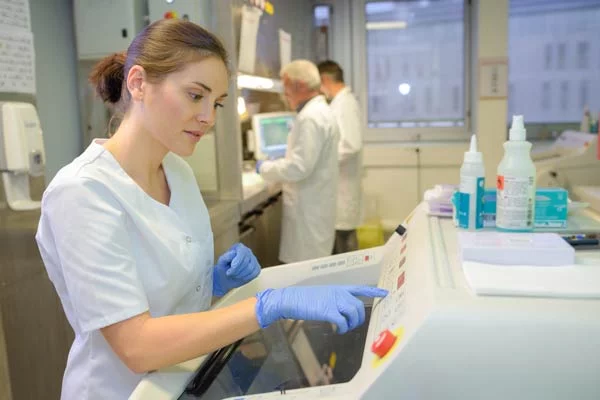
From a Laboratory perspective
From a laboratory perspective, testing NPS’s pose unique problems. Standard on-site devices cannot screen most of the newer drugs.
The composition of many of the drug types – notably the SC’s – change over time. So the laboratory must continually update the drug menu to keep it relevant. For this reason, SWL annually reviews its synthetic drug menu).
Consequently, few Australian or world standards for these drugs and reportable cut-offs are currently based on the world’s best practice guidelines. That there will be an adverse impact and significant degree of impairment when these drugs are detected is certain.
However, since many of these drugs are not slated for human use, in many cases, the exact health effects of the drugs are not yet fully clarified. Standard doses are uncertain. Gauging the immediate impact of a detection (except for medical drugs like Fentanyl) is difficult.
In the case of Fentanyl (or oxycodone), the reportable levels are well-established. The behaviour and effects of these semi-synthetic opioids are well-known to be approached like conventional drugs. It is likely that, over the next decade, a formal consensus will emerge for the reporting and thorough interpretation of these new emerging drugs.
Learn more
Safework Health can help keep your workplace safe from synthetic drugs. Contact us today.
Learn the difference between THC and CBD.
Read more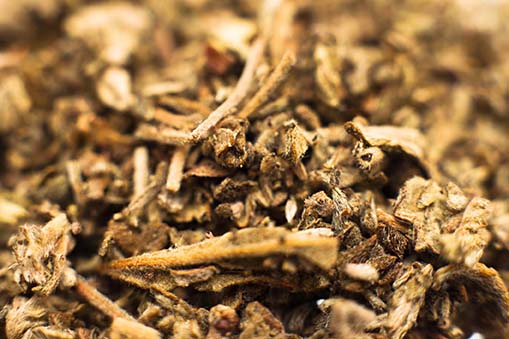
THC and CBD are two of the most popular chemical compounds found in marijuana (Cannabis sativa). Recent studies have shown the potential of these cannabinoids to be used in medical treatments. However, they can still cause some negative side effects especially when not taken properly.
As an employer, it’s best to know how THC and CBD can affect your workers’ health and performance. Understanding the impacts of medicinal cannabis on your employees can help protect your company from potential workplace accidents.
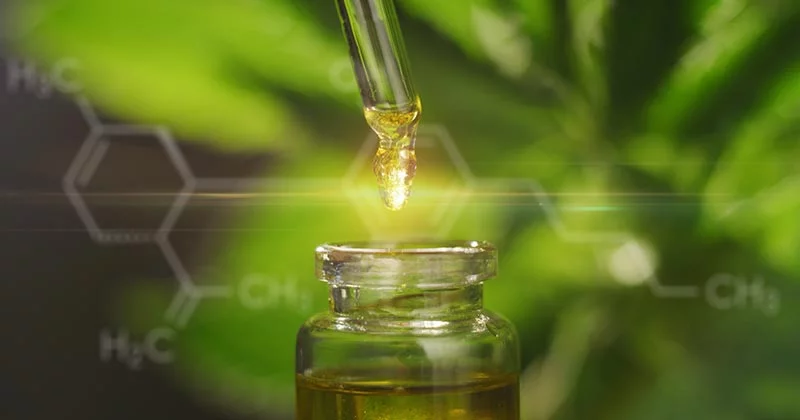
What is CBD?
Cannabidiol (CBD) is a non-intoxicating component of the cannabis plant, also known as marijuana. It is the second most prevalent of the active ingredients next to THC. However, unlike THC, CBD doesn’t produce any psychoactive effects. It doesn’t alter the user’s mind, emotions or behaviour. This means you won’t get high from taking CBD as you would from using THC.
How CBD affects the brain
Both CBD and THC affect the human brain but in different ways. Upon taking the substance, it will make its way to the part of the brain known as cannabinoid 2 (CB2) receptors. It will then bind itself to the CB2. However, the action won’t release any dopamine as would normally happen if it were THC. This is why taking CBD doesn’t trigger any feelings of high or euphoria in users.
CBD can also bind with cannabinoid 1 (CB1) receptors, but it won’t be as strong as THC and CB1. To do this, you need to pair CBD with THC to be able to bind properly with CB1 receptors. This can help minimise the psychoactive effects of THC such as sedation or euphoria.
Medical uses
Scientists have been exploring the possibility of CBD use for medicinal purposes for years. Many of them started out by studying the health impacts of medicinal marijuana. But as more data are gathered, the more it’s become apparent that CBD is the one that has the potential. Some of the medical benefits of CBD include:
1. Anxiolytic
CBD can help people deal with the impacts of anxiety. In a study, researchers gave participants suffering from social anxiety with 600mg of CBD. It helped them manage their condition before they gave a speech. Meanwhile, earlier studies involving animals also showed promising results. CBD may help relieve anxiety by lowering stress levels and reducing its physiological effects such as increased heart rate. It may also help improve symptoms of post-traumatic stress disorder (PTSD) and induce sleep for insomniacs.
To find out more about the anxiety relief effects of CBD use, you can read the study notes here.
2. Anti-inflammatory and possible analgesic
Another study showed that CBD may also help manage pain and inflammation. Researchers applied the cannabinoid on the skin of animals. It helped reduce the pain and inflammation due to arthritis. A separate study also looked into potential of CBD to inhibit inflammatory and neuropathic pain. These are two of the most difficult types of chronic pain to treat in patients.
While these early results are promising, further studies are needed to prove the connection between CBD and pain control.
3. Antiepileptic
CBD may also hold the key in treating people with epilepsy. Research is ongoing to find out how much the cannabinoid can help lower the number of seizures in epileptic patients. They’re also trying to determine just how safe it is to use.
In a 2016 study, researchers gave oral doses of 2 to 5mg of CBD per day to 214 people with epilepsy. They added the cannabinoid to the patients’ already existing anti-epilepsy medications. The researchers then monitored the participants for 12 weeks, taking note of any negative side effects of the CBD doses. They also recorded how frequent the participants had any seizures.
At the end of the program, the participants experienced 36.5% fewer seizures per month. However, 12% of the patients suffered severe adverse effects.
Learn more about the study on the impacts of CBD on epilepsy.
4. Antiemetic
For cancer patients suffering from chronic nausea, CBD may be able to help you manage the condition. Nausea and vomiting are two of the most common side effects of cancer treatment, particularly chemotherapy. In 2016, researchers looked into the effects of CBD on the serotonin receptors of animals. Serotonin is a hormone that affects a person’s well-being, mood, and behaviour. The results showed that the cannabinoid may help alleviate the feeling of nausea. However, the team believes that THC is more likely to reduce nausea and vomiting than CBD.
Meanwhile, in a 2016 study, researchers examined how Sativex can help people suffering from chemotherapy-induced nausea. The drug contains both CBD and THC. Participants said Savitex had a more significant impact on their condition than any other similar medications.
Read about the article on CBD and chemotherapy-related nausea.
Side effects
CBD may be non-psychotropic, but it can still cause some noticeable adverse effects in users. However, the compound is considered more tolerable by the body than THC, even when taken in large doses. Some of the most common side effects of CBD use include:
- Dizziness
- Fatigue
- Appetite changes
- Weight loss
- Diarrhoea
CBD can also produce other adverse effects when used along with other drugs, such as:
- Prescription medications
- Dietary supplements
- Some over-the-counter (OTC) drugs
What is THC?
Tetrahydrocannabinol (THC) is the chemical compound most responsible for the psychoactive effects of marijuana. It acts similarly to the naturally occurring cannabinoid chemicals in the body.
How THC affects the brain
THC binds with the CB1 receptors in the brain. This causes users to feel a high or euphoria after taking the cannabinoid. It can affect the user’s memory, pleasure, movements and thinking. It can also alter their concentration, coordination, sensory and time perception.
Medical uses
People use THC mostly as part of medicinal marijuana. However, drug manufacturers developed synthetic forms of cannabinoid to serve as medicines. These include Marinol (dronabinol), Cesamet (nabilone) and Savitex. The US FDA has approved the use of dronabinol and nabilone to treat chemotherapy-induced nausea and vomiting.
Some doctors prescribe THC to treat people suffering from glaucoma, low appetite, chronic pain and muscle spasticity. They also give the cannabinoid to patients with anxiety and insomnia.
Side effects
THC use produces similar side effects to medical marijuana. This is likely because the chemical compound is the one that triggers the psychoactive effects of the drug. The most common adverse effects of THC include:
- Red eyes
- Dry mouth
- Increased heart rate
- Anxiety
- Slower reaction times
- Coordination problems
- Memory loss
How CBD or THC use can impact workplaces
Researchers continue to investigate the impacts of medicinal cannabis on people’s ability to work safely. Some evidence suggest that taking CBD alone and with no other sedatives doesn’t produce any impairing effects. However, using the cannabinoid along with THC or any other sedative can increase the risk for adverse effects.

Impairment
One of the major issues involving medicinal cannabis use is impairment. Marijuana significantly impairs a user’s judgment, motor coordination and reaction time, according to the US National Institute on Drug Abuse. Several studies have even suggested a direct relationship between blood THC concentration and impaired driving ability.
In fact, marijuana is the illicit drug most frequently found in the system of drivers in vehicular accidents, including fatal ones. Drivers with THC in their blood were roughly twice as likely to be involved in a fatal crash. That’s compared to people who had not used drugs or alcohol prior to driving a vehicle. The data comes from two studies conducted in Europe.
However, it’s not clear just how big a role marijuana plays in road accidents. The drug can still be detected in body fluids for days or even weeks after intoxication. Marijuana users also tend to take the drug along with alcohol. People involved in crashes with THC in their blood were three to seven times more likely to cause the accident. It becomes even more problematic for those with high levels of THC in their system. The risk for vehicular crashes seems to increase when marijuana is used along with alcohol.
In a 2019 study, researchers examined the impact of cannabis-based medication on 14 people. They gave participants medications that contained both CBD and THC. They made the following observations:
- Participants showed substantial impairment for more than 4 hours after using cannabis-based drugs.
- While driving, participants were more susceptible to lane weaving and had slower attention focusing.
- Participants compensated for their ‘stone’ condition by reducing their speed and maintaining safe car spacing. However, they are still more likely to lane weave.
- Drivers who used a combination of CBD and THC performed worse than those that did not.
Avoiding workplace accidents
Workers who use medicinal marijuana with CBD and THC should avoid driving or operating any heavy machinery. The impairment associated with using both cannabinoids at the same time can increase their risk for workplace accidents. They should also avoid being in safety-critical situations, especially during the first 8 to 18 hours after usage.
If your worker is taking CBD as part of treatment, they should limit the usage to the cannabinoid alone. They have to make sure that the product they’re using doesn’t contain THC or any other sedative.

Detecting CBD or THC use through drug testing
For people who use cannabidiol oil, there’s nothing to worry about when it comes to drug testing in the workplace.
Pure CBD oils aren’t detectable through drug screening. However, you have to be careful in choosing the products you use. Many dubious CBD oils contain trace amounts of THC. Some sellers also pass on cannabis extracts in coconut oil as genuine CBD oils to mislead customers.
Meanwhile, THC has the same detection window as smoked cannabis. The cannabinoid is detectable via urine testing for up to 72 hours. However, this doesn’t carry much weight since it doesn’t necessarily correlate with impairment.
To detect impairment, it’s best to use oral fluid testing. Saliva analysis can detect THC between 8 to 24 hours, depending on the dose. If an individual tests negative, then they are assumed to be unaffected by impairment.
Safework Health webinar – Changes in drug use habits and medicinal CBD oil
Check out our video below to understand more about CBD and THC. In it, Safework Health Chief Toxicologist Dr. Phil Tynan explains the differences between the two cannabinoids and how they can impact workplaces.

